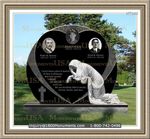|
What To Know When Writing A Funeral Notice
When someone dies, there is a lot of work to do in preparation for their burial rites. Once arrangements have been made, an announcement is generally made to let those who were associated with the individual know of their passing. This is made by issuing formal funeral notices that provide the necessary information.
This is not the same thing as an obituary. That condensed biography of the person who has died is generally written by a newspaper staffer and follows a specific formula. The notice, however, is a paid submission created by the family which contains information regarding the individual as well as the services planned in their honor.
Announcements are usually made through the newspaper but they may also be done through emails and physical invitations. There are two general templates to follow. They either state the basics like who, when and where or they provide a personalized biographical history occasionally partnered with a photograph.
Certain key bits of information should always be included in this announcement. This is usually the complete name of the deceased, including any common nicknames, as well as the maiden name if the deceased was a married female. Their place of residence, surviving family members, date of passing and all details of the services are also among the basic facts to be listed.
Further details of their passing may be included if desired. Adding personal information such as the person's hometown, where they were educated, places they've worked, whether they were military, their religious preferences, civic activities, hobbies and interests may be appreciated by others. It may also be prudent to identify the service officiant and chosen pallbearers.
If the services are to be a private family affair, this should be mentioned in the article. In circumstances where donations for charity are preferred instead of flowers, details need to be part of the announcement. Funeral notices are both a way to share information about the memorial services and to show final respects to the dearly departed.
|
|



























